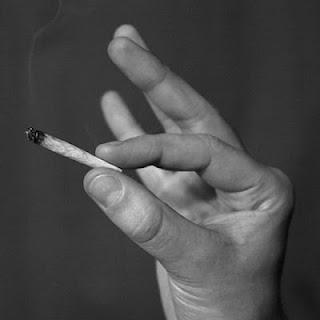 Researchers get good results with gabapentin.
Researchers get good results with gabapentin.
Marijuana, as researchers and pundits never tire of pointing out, is the most widely used illegal drug in the world, by a serious margin. And while the argument still rages, for some years now drug researchers have been migrating to the camp that sees marijuana as an addictive drug for a minority of people who exhibit a propensity for addiction. The scientific literature supporting the contention of marijuana as addictive for some users is robust and growing, as is the body of anecdotal evidence. It’s also clear that in many countries, cultures, and subcultures, combining cannabis with tobacco is a common practice that increases health risks all around.
Ongoing works at the Scripps Research Institute’s Pearson Center for Alcoholism and Addiction Research in La Jolla, California, has focused in part on the lack of FDA-approved medical therapies for treating marijuana addiction. Barbara J. Mason and coworkers at Scripps have reported preliminary success in a 12-week, double-blind, placebo-controlled pilot study with 50 treatment-seeking volunteers, using the anti-seizure drug gabapentin. Gabapentin, sold as Neurontin, pops up as a possible treatment for various forms of pain and anxiety, and sharp-eyed readers will recall that gabapentin was one of the ingredients in the now-defunct addiction drug Prometa.
Marijuana addiction numbers are hard to come by, and often inflated, since many small-time pot offenders end up in mandatory treatment programs, where they tend to be classified as marijuana addicts, whether or not that is objectively the case. Nonetheless, there are plenty of people seeking treatment on their own for cannabis dependence. For people strongly addicted to pot, the problems are very real, and withdrawal and abstinence pose serious challenges. People for whom marijuana poses no addictive threat should bear this in mind, the way casual drinkers bear in mind the existence of alcoholism in others.
The study, published recently in Neuropsychopharmacology, says that “activation of brain stress circuitry caused by chronic heavy marijuana use” can lead to withdrawal symptoms that persist “for weeks or even months, as in the case of marijuana craving and sleep disturbances.” A variety of existing medications have been tested in recent years, including buspirone, an anti-anxiety medication; Serzone, an antidepressant; and Wellbutrin, an antidepressant commonly used for smoking cessation. None of these treatments have shown any effect on cannabis use or withdrawal, according to Mason.
Gabapentin, as the name suggests, was modeled after the neurotransmitter GABA, and works via a transporter protein to raise GABA levels. Effective only for partial-onset seizures, common side effects include drowsiness, dizziness, and possible weight gain. It is a popular anti-epileptic drug, because it is relatively safe, with a low side-effect profile, compared to many of the medications in its class. For the same reasons, it is a common treatment for neuropathic pain. In addition to neuralgia, it has found some use as a migraine preventative.
Gabapentin normalizes GABA activation caused by corticotrophin-releasing factor, or CRF. CRF is a major player in the brain’s stress responses. As it turns out, withdrawal from both cannabis and alcohol ramp up anxiety levels by increasing CRF release in the amygdala, animal studies have shown. “Gabapentin had a significant effect in decreasing marijuana use over the course of treatment, relative to placebo,” the authors report. In addition, gabapentin produced “significant reductions in both the acute symptoms of withdrawal as well as in the more commonly persistent symptoms involving mood, craving, and sleep.”
As a bonus, the researchers discovered that “overall improvement in performance across cognitive measures was significantly greater for gabapentin-treated subjects compared with those receiving placebo.” Gabapentin was associated with improvement in “tasks related to neurocognitive executive functioning”—things like attention, concentration, visual-motor functioning, and inhibition. Counseling alone, represented by the placebo group, “resulted in less effective treatment of cannabis use and withdrawal, and no improvement in executive function.”
As in the case of Chantix for cigarette cessation, a treatment, which now requires additional caveats about possible suicidal ideation, researchers looking for a treatment for drug withdrawal, must weigh the benefits of pharmacological treatment against the possible side effects of the treatment itself. Does gabapentin for marijuana withdrawal pass the “Do No Harm” test? According to Mason, it does. “Gabapentin was well tolerated and without significant side effects” in the admittedly small trial study. The two groups did not differ in the number of adverse medical events reported in the first two weeks, when dropout rates due to side effects are highest in these kinds of studies. The investigators were not relying solely on self-reporting, either. They used urine drug screens, and verified that only 3% of the study sample tested positive for other drugs.
In short, the authors report that gabapentin reduced cannabis use and eased withdrawal with an acceptable safety profile and no signs of dependence. Gabapentin, the authors conclude, “may offer the most promising treatment for cannabis withdrawal and dependence studied to date.” Further clinical research is needed, of course, but the positive results of this proof-of-concept study should make funding those a bit easier.
Mason, B., Crean, R., Goodell, V., Light, J., Quello, S., Shadan, F., Buffkins, K., Kyle, M., Adusumalli, M., Begovic, A., & Rao, S. (2012). A Proof-of-Concept Randomized Controlled Study of Gabapentin: Effects on Cannabis Use, Withdrawal and Executive Function Deficits in Cannabis-Dependent Adults Neuropsychopharmacology DOI: 10.1038/npp.2012.14
Photo Credit: http://pep3799.hubpages.com/

